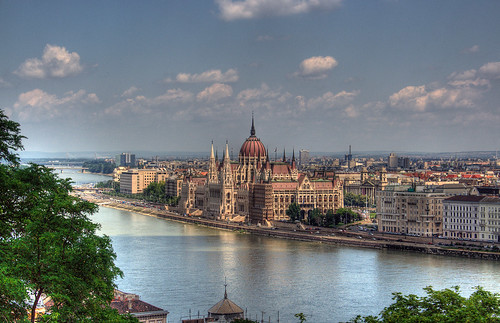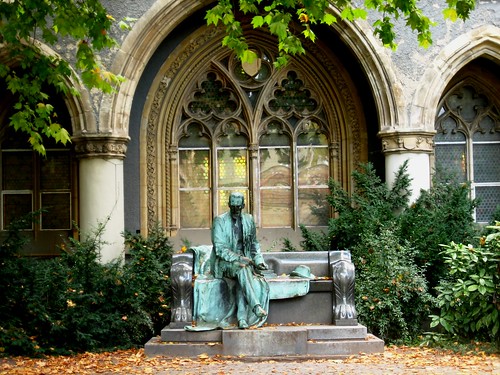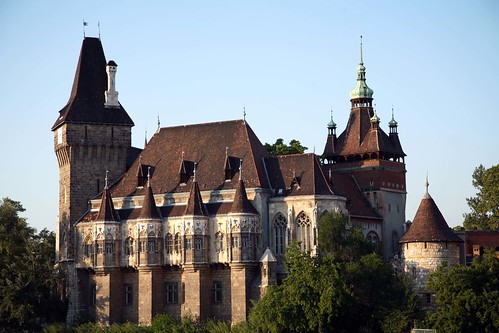Budapest, one of the most beautiful cities in the world, has managed to preserve his soul even though the city has modernized rapidly in recent years. The Hungarian capital, Budapest, extends along the river Danube. The same divide the city into two distinct parts: Buda and Pest. Both sides are linked by seven bridges road and pedestrian traffic. Today the Danube, the old Art Nouveau palace and the wide boulevards are accompanied by gourmet restaurants and trendy bars. They come here with an interest in history and anyone who wants to relax in one of the many steam baths.

Photography by ** Maurice **
Budapest is a city that not only is beautiful and full of historical monuments and dramatic memories. It is also an excellent city for walking or fascinating excursions.
The Danube River flows through the heart of Budapest and so creates a reference point for the visitor who is, or in the ancient cobbled streets of Buda side, or the nineteenth-century boulevards on the Pest side. Your interests will decide on which side of the Danube will spend most of the time. Anyone interested in history will cost you out of the Buddha, with the hill of the Palace recreates the atmosphere of medieval Budapest. For those who like shopping will soon be attracted to the other side of the river where the shops and nightlife are competing for the attention of everyone.
Budapest really is a merger of three cities, Buda and Pest Óbuda. In the 106 a. BC, the Romans founded the city of Aquinicum in northeast corner of the Danube. The Magyars arrived in the late ninth century, after several changes in population. They were descendants of Finno-Ugric tribe with roots in Siberia. Magyar City, with its palace and its wall was called Buddha, and later called Aquincum Óbuda.
People also settled on the other side of the river in the area later called Pest.
After being invaded by the Turks and later by the Austrian army in 1869 Hungary was promoted to equity partner in the Austro-Hungarian dual monarchy. Budapest became one of the most important ports of the Danube, and industrial center.
What places to visit in Budapest?
The Chain Bridge is the bridge linking the cities of Buda and Pest, which are now the capital of Hungary.
Hot springs and spas:
Budapest is famous for its baths, which feel hot water flows from streams. Scéchenyi is the most famous pools Budapest. A Budapest is also known as the city of spas and is the capital of Europe to provide as much thermal wells. Among the most important resorts are: Király baths dating from 1500, the Gellért Spa (known for its spas and in the thirteenth century, it preserves intact its modern facilities and is one of the sites that you can not see in Budapest), the Széchenyi Spa, Spa and Wellness Lukacs Rudas.
Városliget Park:
It is a beautiful city park of Budapest, where the Szechenyi Baths. This large green area situated on the outskirts of Pest is popular holidays.

Photography by Kieran Lynam
Vajdahunyad Castle:
This Castle is located in the City Park, just behind the Plaza of Heroes. Initially rose wood and cardboard, for an exhibition, it is now of stone and brick and houses the Museum of Agriculture. It is a medieval castle as we think. It is of recent construction. It used the Romanesque, Gothic, Renaissance and Baroque.

Photography by Bruno Girin
Royal Palace in Budapest:
The Royal Palace is situated on the hills of Buda. Gallery houses the Hungarian National Art Museum, the Museum of Contemporary Art and the Museum of History. The funny thing is access to board the funicular.
The Synagogue Home / Nagy Zsinagóga:
The Jewish quarter in the Pest side is one of the largest in Europe, although the number of Jews fell significantly during the Second World War. Here is where the Main Synagogue, the largest in the world outside New York. Next to the synagogue is a Jewish museum.
St. Stephen’s Basilica:
St. Stephen’s Basilica (Hungarian: Szent István-Bazilika) is a religious building, listed as a basilica under the patronage of Saint King Stephen I of Hungary, located in the city of Budapest, Hungary’s state capital.
Hero Square:
The Hero Square is one of the most important squares in Budapest, Hungary. It is located at one end of Andrássy Avenue (with which it forms part of the whole World Heritage Site), near the city park. Plaza vast, spacious. In the center of the square stands the Monument to the seven Magyar chiefs who defeated the Romans.
The Liberty Bridge:
The imperial bridge of La Libertad, like many other bridges join Buda and Pest strength, the popular city. The Hungarian capital ded river called Danube and runs slow and powerful under these famous bridges.
La Colina Del Buda:
The Palace on the Buda hill contains several museums including the Museum of Contemporary Art, Ludwig museum, the National Gallery and Budapest History Museum. Here also are narrow alleys and magnificent churches. The walled Castle Hill (Várhegy) has been declared a UNESCO heritage world.

Photography by blacktie.whitenoise
The Church of San Matias:
Officially called the Church of Our Lady but popularly called St. Matthew in honor of Matthias Corvinus (Mátyás király), the most famous Hungarian king who ordered the south tower built in 1470. Cultural Heritage of Humanity, and more than 700 years old, in many ways the church is a reminder for Hungarians of the former wealth of the city, together with its tragic history. It concluded the most solemn acts of the nation, as the two weddings of King Matthias or the coronation of Charles IV, the last Habsburg king.
Andrassy Avenue:
Andrassy Avenue is an icon of the city with its buildings, palaces and houses of neo-Renaissance style, declared World Heritage by UNESCO. Andrassy Avenue is impressive. Palaces, majestic buildings. It is a highly recommended ride. Another thing you can not let go of Budapest.
Budapest National Opera:
Budapest, with Vienna, is the international capital of opera. The beautiful Opera House, completed in 1884, worth a visit even if you’re interested in listening to opera. But if you like opera, you have to book well in advance. Go to the opera in Budapest is a festive occasion.
Bon voyage!
Leave a Reply
You must be logged in to post a comment.
Recent Comments